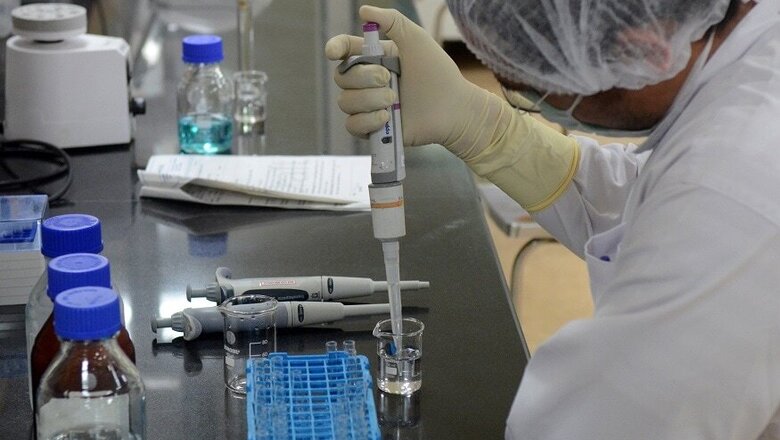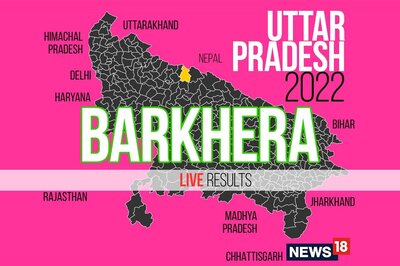
views
A consortium of autonomous scientific institutions of the Department of Biotechnology had sequenced 1,000 SARS-CoV-2 genomes and published an analysis in a paper earlier this month, which discussed the strains and mutations in circulation across the country. This was the first pan India analysis of this kind, which established that the strain introduced in the country from Europe and Middle Eastern countries was a predominant one.
This project and the analysis were coordinated by the National Institute of Biomedical Genomics in Kalyani, West Bengal. News18.com interviewed the director of the institute, Dr Saumitra Das, who spoke on the need for such an analysis, the crucial second phase of the study that will look at the impact of mutations on transmission and on the much-discussed D164G mutation.
Q: A consortium of scientific Institute’s recently sequenced 1,000 SARS-CoV-2 genomes across the country and the project, coordinated by NIBMG, established the specific strains that are predominant in India. Why was it important to study these strains?
So, I think that the main confusion before we started the project in March and April was that we were not sure. There were sporadic reports of one or two centres where there are mutations happening, and, you know, if you compared the severity of the disease, it was all varying in different states. In some of the states, the disease severity was more and in some states, the transmissibility was more while severity was less. With all of this happening, people were obviously a little anxious about whether it is possible that in some of the states the virus that is circulating is more dangerous. Nationally too, we needed to see if we took a policy decision, which will be affecting all states then we also needed landscape plans to know exactly what is happening in each pocket.
It was in this spirit that our minister Dr Harsh Vardhan and Secretary of Department of Biotechnology, Renu Swarup, thought why not sequence 1,000 genomes all over India. So, DBT institutes all over India worked on this and collaborated with local hospitals. We found that the A2a strain swept all across India, it overshadowed other strains. So through this project we know that the same strain is circulating in different places.
When you know that the same strain is predominant all over India but the disease severity or damage is different across states, this could be partly attributed to the genetic makeup or the genetic determinant of individuals found in those states.
Q: Which are the most potent strains across different states?
The results suggest that actually, if you compare east, west, north and south, everywhere, it is the A2a strain. But if you nitpick, then you can actually see in some of the states A2a was found a little later compared to the other states. But at this moment after June, only the A2a haplotype emerged as the predominant haplotype all over.
Q: Will the consortium or your institute study the implications of this strain or mutation on the transmissibility?
Yes, we are doing a second phase of the study to look at the implications of these mutations on virus entry, immunogenicity and pathogenesis using a VLP model. Now, how do you study this? What we are trying, is to create a virus-like particle (VLP).
A VLP is essentially a protein coat of the surface proteins but the nucleic acid is absent. Since the nucleic acid is lacking it is a safe virus to deal with and it won’t replicate inside the host, whether it is a cell culture or animals. But due to surface proteins, they will be immunogenic and as good as the original infectious virus. So, you have the cover of the virus but the inner package is empty.
We want to incorporate these mutations that we have observed in this genome sequencing into this VLP. Using this VLP model, we can study the influence of the mutation on virus entry, immunogenicity and pathogenicity. This can be injected in an appropriate animal model if we want to test immunogenicity. To study the implications of the mutation on virus entry and pathogenicity, it will be studied in a cell culture.
Q: Where will these studies be carried out?
The cloning part is being done here. Once the cloning is done, we’ll try to do the cell culture study in IISc because we have the animal facilities there. So, we can easily test some immunogenicity in animal models at Indian Institute of Science in Bengaluru. We have started making the (VLP) construct, it will take few months to come to a stage where I can report about the immunogenicity.
Q: Can you tell us a bit about this D614G mutation, which has been in discussion. The consortium’s paper, too, talked about it.
This particular mutation we have learned so far that it is likely to impact the receptor binding. So that’s why people are saying that it is more transmissible and helps more in the virus entry. However, it is less likely that it will be affecting any of our vaccine strategies.
If we go by the data, this strain has been reported from May onwards. Through June, July and August it has been in circulation and has probably swept out other strains pan India. It is now more abundant in India and it was not the case earlier in late April and beginning of May.

















Comments
0 comment